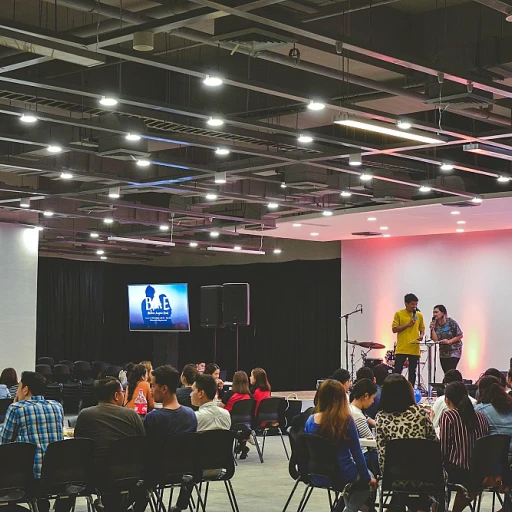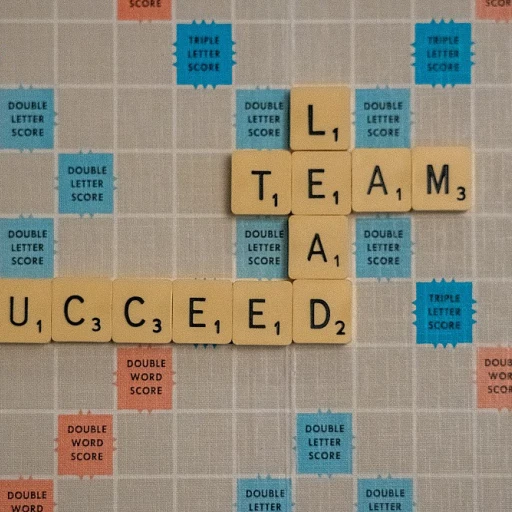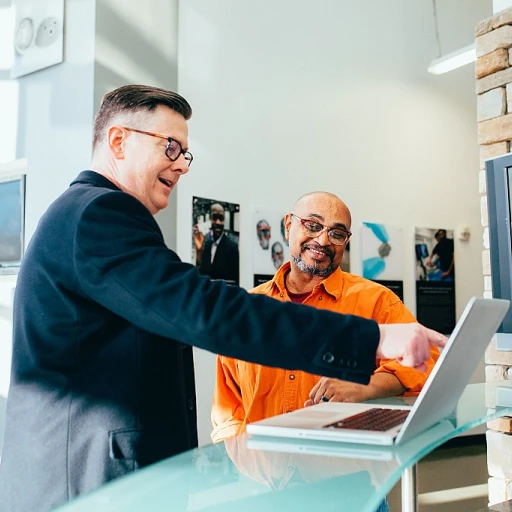
Understanding the Importance of Feedback in Leadership
Recognizing Feedback as a Leadership Tool
Feedback is crucial in leadership, guiding both team and individual growth. Leaders who excel understand that effective feedback is more than just communication; it's an ongoing commitment to personal and team enhancement. Effective leaders see feedback as an essential tool—not just a one-time activity but a key part of team dynamics and culture. Feedback goes both ways. Whether giving or receiving, the benefits are significant. When engaged in feedback exercises, team members become acutely aware of their areas for improvement. This awareness is crucial for implementing constructive changes within the group. Creating a positive feedback culture requires practice giving and receiving feedback in a constructive manner. It’s not just about identifying shortcomings but also acknowledging achievements. When actively practiced, these skills develop into more efficient communication and work processes. Feedback training helps leaders foster an environment where team members feel comfortable. In this context, receiving feedback is not a daunting experience but a productive one that can lead to growth. It enhances communication skills among team members, encouraging a transparent work atmosphere. Mastering feedback involves understanding its transformative power in leadership contexts. It is not a passive exchange but a dynamic activity that can lead to significant positive changes. For more insights into mastering the art of leadership, continue exploring effective feedback practices with your team.Effective Techniques for Giving Constructive Feedback
Strategies for Delivering Constructive Feedback
Giving feedback is an integral part of leadership as it significantly impacts team dynamics and productivity. By adopting effective feedback techniques, leaders can foster a work environment that promotes growth and open communication.- Choose the Right Time and Setting: Deliver feedback in a private and appropriate setting. This ensures that the person receiving feedback feels comfortable and open to discussing areas for improvement. Timing is also crucial; it’s best to provide feedback soon after the activity or behavior in question.
- Practice Radical Candor: While it’s essential to be direct and honest, do so with care and respect. This approach builds trust and encourages team members to take feedback positively, fostering a culture of transparency.
- Focus on Behavior, Not the Person: When specifying areas for improvement, concentrate on specific behaviors rather than personal traits. This helps the recipient of feedback to understand the feedback without feeling personally attacked.
- Use the "Sandwich" Approach: Start with positive feedback, follow with constructive criticism, and conclude with encouragement. This balanced method of giving feedback softens the delivery of critique while still communicating valuable insights for growth.
The Role of Active Listening in Receiving Feedback
Active Listening: A Key Ingredient in Accepting Feedback
Feedback is not just about giving; it is equally important to master the art of receiving feedback effectively. Active listening plays a crucial role in this process, aiding leaders and team members in understanding the context and intent behind the feedback they receive.
Here are some important aspects to consider:
- Focusing the Mind: To receive feedback positively, it's essential to be fully present. This means eliminating distractions and concentrating your attention on the person giving feedback. The more you focus, the better you will assimilate the feedback.
- Listening Without Interruptions: Allow the team member to express themselves without interruption. This shows respect and helps build a culture of open communication.
- Asking Clarifying Questions: If any part of the feedback is unclear, ask questions to gain better understanding. This may involve asking the person to give specific examples or areas of improvement, thereby making the feedback constructive and actionable.
- Reflective Responses: Encouraging reflective responses fosters an environment where feedback is seen not as criticism, but as an opportunity for growth.
Training sessions focused on active listening, comprising practical exercises and feedback activities, can be highly effective in helping a group of leaders enhance their communication skills in a positive way. Incorporating radical candor within these sessions will sharpen the effectiveness of feedback received and promote a feedback-friendly culture.
Building these skills will aid participants in adapting to a feedback culture and improve the quality of their interactions within teams. Active listening is not a step to be skipped but an essential skill that can transform the way feedback is received and applied at work.
Overcoming Common Barriers to Feedback
Breaking Down Barriers to Effective Feedback
Before engaging in productive feedback, it’s essential to recognize common barriers that may prevent meaningful exchanges. Addressing these challenges can greatly enhance the experience and outcome of giving and receiving feedback within a team. One predominant barrier is the fear of negative reactions. Team members often hesitate to provide constructive feedback because they worry about causing offense or damaging their working relationships. Encouraging an atmosphere of radical candor can mitigate this fear, emphasizing that the goal is to promote growth and improvement rather than criticism. Time constraints also play a significant role. In fast-paced work environments, finding the time to engage in thorough feedback exercises might seem daunting. However, scheduling dedicated time for this activity — even just a few minutes — can make a big difference and help foster a feedback culture. Moreover, a lack of effective communication skills might hinder both the giving and receiving of feedback. Training and feedback activities, such as role-playing exercises, can be an excellent way for team members to practice giving and receiving feedback in a controlled setting. These exercises help improve their communication skills and ensure the feedback is constructive. Cultural and individual differences can also present challenges. Cultural norms around feedback can vary widely, and recognizing these differences is crucial. It’s important to tailor feedback techniques to suit the diverse personalities and backgrounds of each team member. Finally, consider tackling emotional barriers. People might become defensive when receiving feedback due to prior negative experiences or personal insecurities. Creating a safe environment where team members feel comfortable accepting feedback, both positive and for areas of improvement, will lead to more effective communication. Ultimately, overcoming these barriers requires conscious effort and commitment. By dedicating time and resources to develop feedback training, leaders can build a feedback-friendly culture that emphasizes development and continuous improvement. Understanding these obstacles and addressing them proactively will empower teams to embrace constructive feedback, ultimately leading to enhanced collaboration and productivity.Creating a Feedback-Friendly Culture
Fostering an Environment for Feedback Exchange
Creating a feedback-friendly culture within a team or organization requires intentional efforts by leadership. This involves ensuring that feedback moves beyond formal performance appraisals to become an integral part of daily communication. Here’s how to nurture such an environment:- Normalize Feedback as a Positive Activity: Encouraging feedback as a regular, constructive exercise allows team members to view it as a developmental tool rather than criticism. Training programs can introduce effective techniques for giving constructive feedback, enabling both-giving and receiving feedback openly.
- Integrate Feedback into Regular Workflows: Establish regular feedback activities during team meetings or one-on-one sessions. Allocating just a few minutes at the end of these activities for feedback can reinforce communication skills, making it a routine part of work.
- Empower Team Members to Give Feedback: Leaders should actively encourage all team members to partake in feedback exercises, offering positive reinforcement when they contribute effectively to the dialogue. This encourages participation from all levels, not just leadership.
- Establish Clear Guidelines for Constructive Feedback: Providing training on effective feedback communication ensures that team members understand how to articulate areas of improvement without negative implications. A structured approach can help in practice-giving and receiving feedback constructively.
- Leverage Feedback for Continuous Improvement: Transform the feedback received into actionable steps aimed at personal and organizational growth. A feedback culture thrives when people see how their input is helping the team evolve.
- Promote Radical Candor: Encouraging open, honest communication can significantly enhance a feedback culture. Approaching discussions with empathy, yet frankness, can help team members address issues promptly, fostering an environment of trust and transparency.












